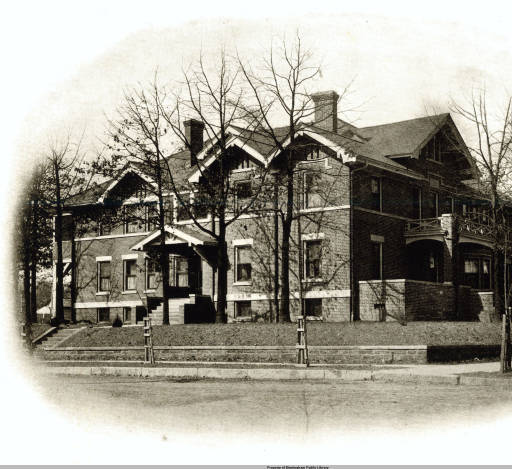In this photograph of Pelham before
1909, building No. 1 is the Rutherford
High School; No. 2 is the Cumberland Presbyterian Church; and
No. 3 is the Methodist Episcopal Church, South.
The house in the photograph, in front of and between building No. 2 and
building No. 3, is the Turpin Family house. The original of this photograph,
along with many other "old" original photographs of Pelham, are in a
collection owned by Bobby Joe and Diane Seales.
The
recent creation of a city school system brings to mind the history of schools
in Pelham. The Shelby Guide newspaper for April 23, 1872, declared the “citizens of
the village and vicinity have just completed a large and commodious Academy and
have an interesting school under the superintendence of Rev. C.L. Kirksey,
nearly fifty pupils…” In February 1879 the Shelby
Sentinel noted that the school “in a flourishing condition” was then
managed by Mr. Shell Cross.
The
building also served as a church and was known as Rutherford High School.
Destroyed by a storm in April, 1909, it was replaced by a two-story wood frame structure
with the school on the bottom floor. This second facility, the Pelham School,
was replaced in 1936 with a one-story building that had classrooms, an
auditorium and lunch room and served as an elementary school for about 150
students. After Valley Elementary opened in 1964, the third school served as
city offices until replaced on the same site by the current City Hall in 1975.
A
resident who attended the Pelham School, Ida Cumberland, once told the Shelby County Reporter about the
experience. “When the wind would start blowing and the weather would get bad,
they would make us get out and get down in a ditch. They were afraid the
building would blow away with us in it.” More details about these early schools can be
found in a history of Pelham written by public library director Barbara Roberts and
available there.
In
September 1974 Pelham High School opened with students in grades 7, 8 and 9;
the first class graduated in 1978. Riverchase Middle School opened in 1977, and
Valley Intermediate followed in 2000. As the new city school system develops, other
schools may well open and close.
Note: A version of this post was published in the Pelham City News Winter 2014 issue.

































